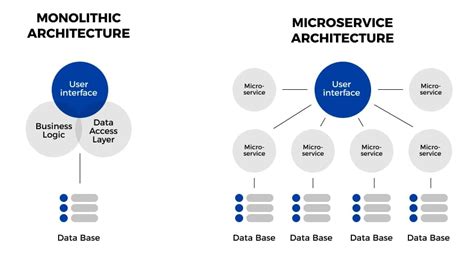In today’s software engineering realm, the choice between microservices and modular monolithic architectures is one of the most debated topics. Both approaches have passionate advocates and critics who present compelling arguments rooted in their unique experiences. While each comes with its advantages and disadvantages, the underlying principle remains: selecting the right architecture heavily depends on the specific requirements and context of the project at hand.
Microservices, in theory, promise the world of modularity and scalability. By breaking down an application into independent, loosely-coupled services, they aim to alleviate many challenges tied to monolithic applications. Each microservice can be developed, deployed, and scaled independently. This compartmentalized approach theoretically allows teams to work with greater autonomy and reduces the potential impact of bugs in one service on the entire system. But, as many developers point out, this approach is not without its downsides.
A critical drawback of microservices, especially highlighted by developers, is the added complexity in orchestrating and maintaining numerous services. The overhead in coordination, communication, deployment, and monitoring can be substantial. Complexities arise when services need to communicate seamlessly, often leading to
communication latency. As one developer aptly put it, “Microservices can destroy DevOps teams used to kludging polyglot stacks together.” This sentiment underscores the significant cultural and technical challenges of adopting microservices.
On the other side of the spectrum lies the modular monolith. A modular monolith retains the single-deployment unit of a traditional monolithic application while enforcing a stricter separation of concerns through well-defined modules. By doing so, it aims to create clear boundaries within the software, ensuring that changes in one module do not inadvertently affect others. One developer humorously captured the essence of this debate with a visual quadrant of software architectures, representing a collection of different potential configurations ranging from spaghetti monoliths to clean, independent services.
At the heart of the debate, developers discuss
scalability and resource allocation. Microservices naturally lend themselves to targeted scaling – adding resources to the specific services that need them most. However, a common misconception, as challenged by some developers, is that modular monoliths can’t achieve a similar effect. In reality, a well-architected monolith can scale horizontally just like microservices by utilizing proper partitioning strategies. This holistic perspective reveals that the choice isn’t always about immediate technical capabilities but often organizational needs and project scale.
An often understated aspect of this debate is team structure and cultural alignment. Microservices can be a fantastic fit for organizations with teams requiring high autonomy, perhaps due to geographical distribution or varying tech stacks. This decoupling can empower developers to move faster within their domains of expertise, while a monolith can carry the risk of ‘spaghetti code’ when too many developers touch the same codebase. Yet, as commenters note, even with microservices, there’s no magic bullet to enforce strict boundaries without rigorous code reviews and architectural discipline.
Further complicating this conversation is the hype and cargo cult mentality surrounding new technologies. Some argue that microservices have been adopted without sufficient critical analysis or comprehension – as seen with instances where developers prematurely fragmented their applications, resulting in unnecessary complexity. Critical voices emphasize, as seen in the comment, “The problem with Microservices is actually that most developers simply have no time, willingness, experience, or mental capacity to think critically about all that stuff.” This critique underscores the need for thoughtful consideration rather than blind allegiance to trending industry paradigms.
Moreover, there are unique trade-offs in both architectures that cannot be ignored. For instance, microservices are often touted for their fault tolerance, allowing systems to remain partially operational even if individual services fail. On the flip side, the monolithic approach can simplify deployment and monitoring significantly, especially in the early stages of product development where systems are less complex.
In conclusion, it’s evident that neither approach universally trumps the other. Both microservices and modular monoliths hold their ground based on different scenarios and requirements. The key is to understand the problem space and solution space thoroughly, rather than defaulting to any architecture as a one-size-fits-all solution. As the comments illustrate, well-informed decisions – tailored to the specific context, team structure, and project scale – are paramount for achieving sustainable and maintainable software systems.


Leave a Reply